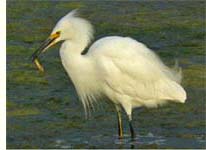
HISTORY
A Brief History of the Point San Pablo Peninsula
by Donald Bastin, Former Executive Director, Richmond Museum of History
On New Year’s Day of 1903, the Richmond Record Herald warmly touted the impending construction of a belt line railway, along Richmond’s western waterfront and around Point San Pablo, tying together “…the dozens of factories and great system of docks which are projected to entirely encircle the vast waterfront.” In ten years, it was confidently predicted, the population of the little town of Point Richmond would reach 40,000, and its future of this “magnificent city” would “…exceed the expectations of the most optimistic.” Bold words. And, all things considered, not terribly unrealistic.

Indeed, within a few short years, the northern portion of the western waterfront was home to many commercial enterprises, including the Standard Oil Long Wharf, a whale oil processing plant, an oil can factory (owned by Standard Oil) at Point Orient, a brick factory (Central Brick, just beyond Point San Pablo), two rock quarries (Blake Bros. and Healey & Tibbetts), a large winery complete with worker housing, a hotel, and a school (Winehaven), and, of course, at Point San Pablo a ship terminal to handle all the cargo being produced at these enterprises. In 1915, the area became even busier, with the opening, at Point Castro, of the Richmond-San Rafael Ferry system. It seemed that the early predictions of economic boom were to be proved correct.
But by 1920, the summit had already been reached, and a slow commercial decline set in, which has continued to the present day. Prohibition was the death blow to the winery, which struggled along for a few years in the 1920s, selling grape juice and sacramental wine. At the same time, the Healey & Tibbetts quarry, near Point Molate, went under, as did the Central Brick Company.
The can company at Point Orient was never very successful, and was moved onto the refinery. Things picked up in the early 1940s, when the Navy acquired Winehaven, and set up a fuel depot, using the old winery housing for naval families. Around 1930, Captain Clark, who had begun the Richmond-San Rafael Ferry, strung some old hulks together, and created the Point San Pablo Yacht Harbor, just beyond Point San Pablo. And between the Point and the harbor, there sprang up some fish-processing plants, to handle the tons of sardines brought in by Italian (and other) fishermen. The failure of the sardine run killed this industry, and in its place, in 1956, a whale-rendering plant was erected. In business for 15 years, it closed in 1971, when all whaling in the United States was banned.
In 1956, with the completion of the Richmond-San Rafael Bridge, car-ferry service on San Francisco Bay came to an end. For a time, the old ferry pier was used for recreational fishing, but by the 1980s, due to lack of maintenance, the pier was no longer usable.
For a time, some people were attracted to the peninsula by the operation of some steam trains and cars, run by a group of steam train buffs, using part of the old belt line Railway. But the club moved their equipment to Niles, and by the late 1980s, local residents had little reason to venture out on Western Drive. Even the Navy was leaving, and by 1995, the last family had moved out. By 2000, about the only draw was Point San Pablo Yacht Harbor, which was (and is) still in operation, and which provides boat access to the East Brother Light Station, a bed and breakfast facility on the National Register of Historic Places. Point Molate Beach, once the site of a Chinese shrimp camp (which operated until about 1912), had been turned into a city park, but, due to lack of maintenance funding, has been closed for years.

Point Molate Beach Recreational History:
Click Here to learn about the recreational history of Point Molate Beach from 1930 to 2013.




